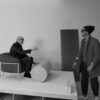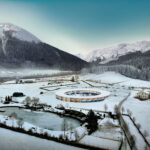The new Tottenham Court Road station is just one of the stations on the new 100-kilometre-long Elizabeth Line that crosses the entire city of London from east to west, covering 60 miles from Reading to Shenfield.
The Hawkins/Brown studio that was handed the commission to regenerate the station, has created a design based above all on the “character” of the two station entrances. The western entrance that opens onto Soho and the nightlife that characterises this district is the so-called “dark” exit, whereas the eastern entrance is lighter and brighter.
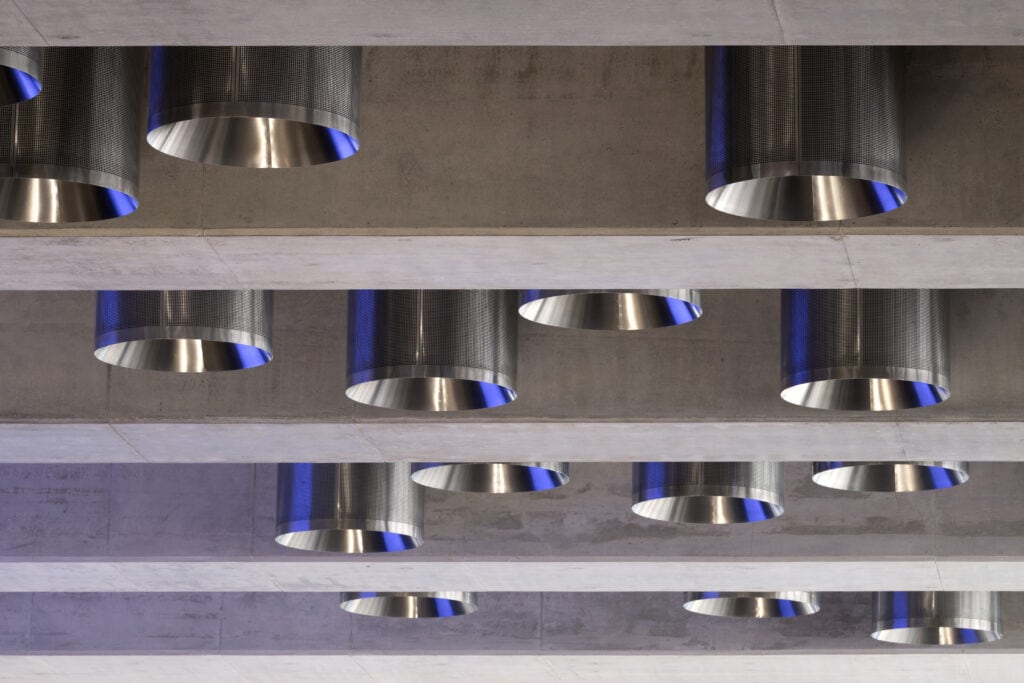
Thanks to the station being positioned in an area that hosts offices, shops and theatres, this hub is specifically designed to accommodate more traffic than any other station on the new line: 30,000 passengers an hour will pass through it at peak times.
It is also one of the most complex stations. In addition to having to weave through and join up with the existing Northern and Central Line tunnels, the project also had to negotiate other underground structures and services in the centre of the city, including the foundations of the nearby Centre Point tower. To construct the station, chunks of the city also had to be knocked down at both ends, including a whole block of 1990s club venues.
The eastern ticket hall was completed and opened to Northern and Central line passengers back in 2015. This is what the architect Roger Hawkins calls the “bright” entrance due to the natural light that drops down the east side from two glazed canopies situated over the escalators which carry passengers up to a small plaza in front of Centre Point. One of the exits emerges opposite the golden flank of the St Giles building, another of the buildings that has been regenerated thanks to the arrival of the Elizabeth Line.
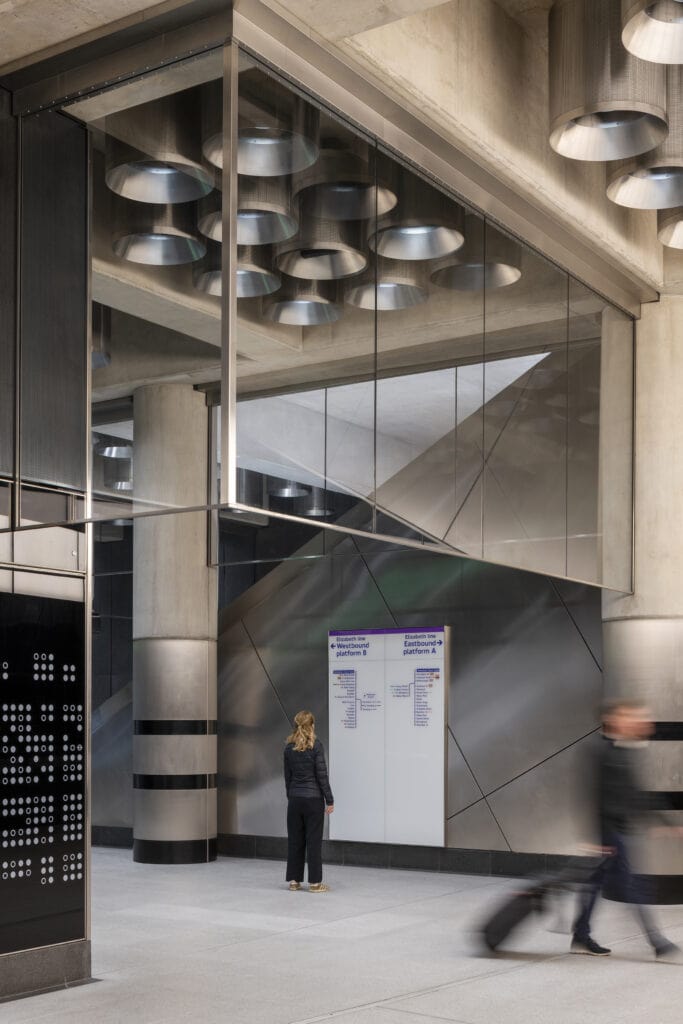
The other main entrance/exit is located on the corner of Oxford Street and Charing Cross Road under a mixed-use AHMM-designed complex incorporating a new theatre. This is an additional element that seeks to revive the area as an entertainment centre.
The escalator walls here are decorated with geometric, ceramic works by artist Daniel Buren, one black and white, and the other one coloured. Their strong graphics enliven the atmosphere of the entrances in a tribute to the mosaics by Eduard Paolozzi that once marked the entrance to the Tottenham Court Road escalators, and which have now been partially relocated at the University of Edinburgh.
At the bottom of the escalators is a spacious area featuring an underground link to the Northern line. The space is defined by a wall faced in red glass panels that directs the flow of passengers towards the Northern line on the left and towards the entrance to the Elizabeth line platforms on the right.
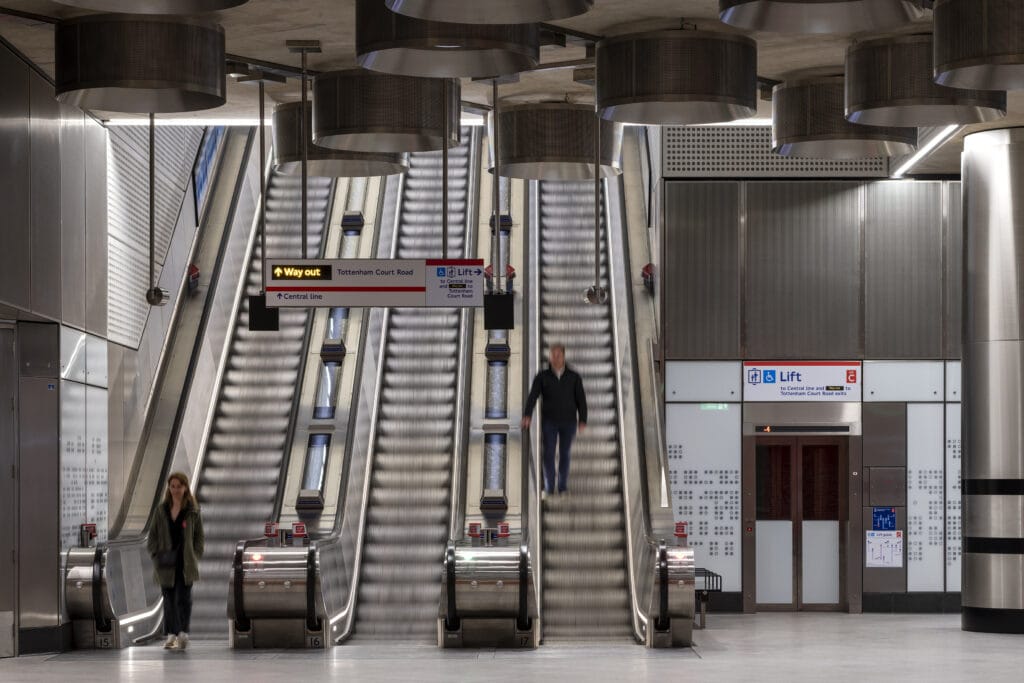
For the walls in this area, the Hawkins/Brown studio has designed a random pattern based on a stylised plan of Soho.The ceiling of the station features another Hawkins/Brown decoration made of perforated metal drums that combine acoustic attenuation with integrated lights and speakers for station announcements. These robust elements animate the space and blend harmoniously into their surroundings without distracting the passengers.
Specifically designed by iGuzzini for this project, the luminaires were inspired by Soho theatre stage lighting. The external stainless steel shells are perforated and the body is filled with black steel wool to soften the background noise that would otherwise make the station announcements inaudible.
All the drums are located in playful patterns between the concrete beams of the station ceiling. This irregular arrangement imitates the flow of the people passing through the station with greater concentrations of drums above areas where passengers tend to congregate. The drums are attached directly to the concrete as these areas do not have false ceilings. Most of the cylinders house DALI-enhanced MaxiWoody projectors and are located directly above the floor to provide diffuse, homogeneous lighting with a wide flood optic and a 4000K colour temperature. The projectors are also positioned in a way that ensures the light emitted is intercepted by the cylinder to avoid glare.
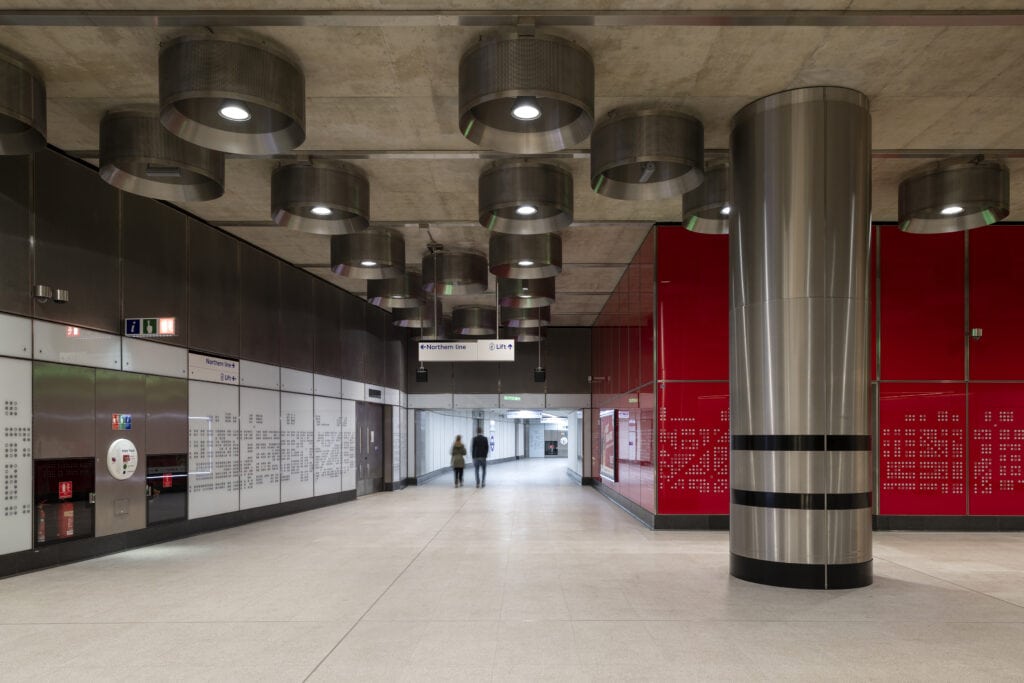
Some of the drum modules house speakers for station announcements whereas others are empty and act purely as sound absorbers. But, to create a consistent style, they all look the same.
We worked closely with iGuzzini to ensure that the light fittings not only met the correct lux levels on the working plane (floor) but also the perfect lighting effect. So through a series of trials we adjusted the height of the Maxi Woody fitting within the drum to ensure that an optimum amount of light catches the bevel of the drums and that allows you to get a sort of soft, subtle glow when you look at the drums across the ticket hall. We needed to improve the overall acoustic performance of the station so the outer casing of stainless steel is perforated to allow sound to be absorbed. The light drums not only act as a light source but also help to improve the intelligibility of the passenger announcement system.
Ross Bowman, Hawkins/Brown


